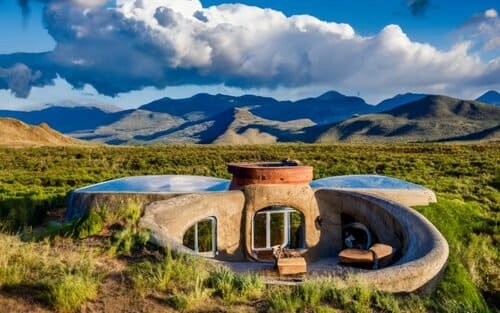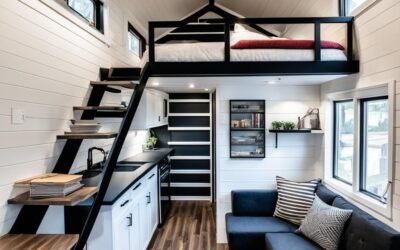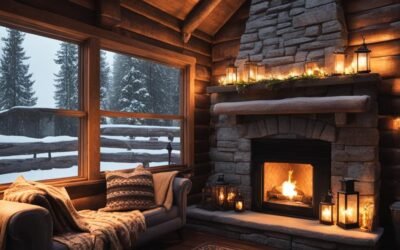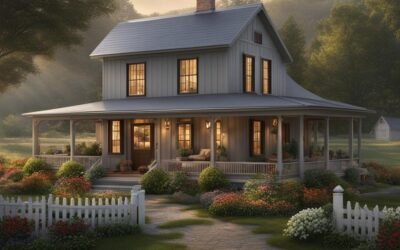I’ve always been captivated by the charm and beauty of tiny cottage homes. These small wonders are more than just houses; they are cozy retreats that embrace the concept of simple living. Whether you’re drawn to the idea of downsizing, intrigued by small house design, or simply seeking a peaceful sanctuary, tiny cottage homes offer the perfect solution.
One of the most appealing aspects of tiny cottage homes is their ability to combine style and comfort in a compact space. Gone are the days when downsizing meant sacrificing aesthetics or livability. With the rise of tiny home living, cottage style houses have evolved to encompass a range of architectural designs, from traditional to modern minimalist. Each tiny cottage home is a unique expression of its owner’s personality and values.
Key Takeaways:
- Tiny cottage homes offer a cozy and charming retreat into simple living.
- Small house design can prioritize style and comfort without sacrificing functionality.
- There are endless architectural possibilities when it comes to cottage style houses.
- Embracing simple living in a tiny cottage home allows you to reduce clutter and focus on what truly matters.
- Experience the joys of minimalist living by exploring the world of tiny cottage homes.
The Benefits of Tiny Living
Living in a tiny cottage home offers a range of benefits. These cozy cabin homes provide a sense of comfort and simplicity, allowing residents to focus on what truly matters. With compact home designs, every inch of space is optimized for functionality, ensuring that no space goes to waste. Tiny living also promotes minimalist living, encouraging individuals to declutter and live with only the essentials. Additionally, tiny cottage homes are often built with sustainability in mind, incorporating eco-friendly features such as solar panels and rainwater collection systems.
Living in a tiny cottage home offers a range of benefits. These cozy cabin homes provide a sense of comfort and simplicity, allowing residents to focus on what truly matters. With compact home designs, every inch of space is optimized for functionality, ensuring that no space goes to waste. Tiny living also promotes minimalist living, encouraging individuals to declutter and live with only the essentials. Additionally, tiny cottage homes are often built with sustainability in mind, incorporating eco-friendly features such as solar panels and rainwater collection systems.
Living in a tiny cottage home offers a range of benefits. These cozy cabin homes provide a sense of comfort and simplicity, allowing residents to focus on what truly matters. With compact home designs, every inch of space is optimized for functionality, ensuring that no space goes to waste. Tiny living also promotes minimalist living, encouraging individuals to declutter and live with only the essentials. Additionally, tiny cottage homes are often built with sustainability in mind, incorporating eco-friendly features such as solar panels and rainwater collection systems.
The Elements of a Tiny Cottage Home
 The design of a tiny cottage home is carefully crafted to maximize space and create a cozy atmosphere. Cottage house plans often feature a gabled roof, adding a touch of elegance and character to the exterior. The interior of a tiny cottage home is designed with functionality in mind, making use of every available space. Open floor plans create a seamless flow between rooms, while built-in storage solutions help keep the space clutter-free. The aesthetic of a tiny cottage home often incorporates clean lines, neutral color palettes, and uncluttered spaces, creating a calming and inviting environment.
The design of a tiny cottage home is carefully crafted to maximize space and create a cozy atmosphere. Cottage house plans often feature a gabled roof, adding a touch of elegance and character to the exterior. The interior of a tiny cottage home is designed with functionality in mind, making use of every available space. Open floor plans create a seamless flow between rooms, while built-in storage solutions help keep the space clutter-free. The aesthetic of a tiny cottage home often incorporates clean lines, neutral color palettes, and uncluttered spaces, creating a calming and inviting environment.
| Element | Description |
|---|---|
| Gabled Roof | A distinctive feature of cottage house plans, the gabled roof provides an elegant and charming exterior look. |
| Open Floor Plans | Tiny cottage homes prioritize a seamless flow between rooms using open floor plans, creating a sense of spaciousness despite the limited square footage. |
| Built-in Storage Solutions | To optimize space, built-in storage solutions such as shelves, cabinets, and multifunctional furniture are cleverly incorporated into the design. |
| Clean Lines and Neutral Colors | The aesthetic of a tiny cottage home often features clean lines, minimalistic details, and neutral color palettes, creating a calming and inviting atmosphere. |
Practical Tips for Living in a Tiny Cottage Home
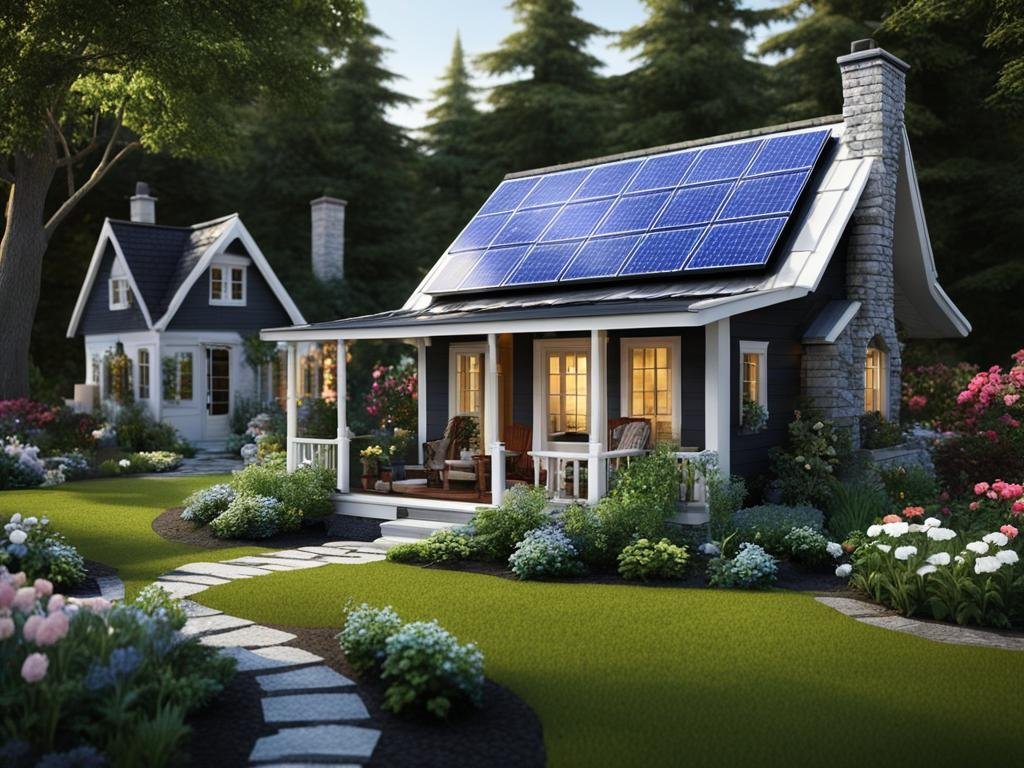 Living in a tiny cottage home requires some adjustments and practical strategies. Embracing a minimalist mindset and decluttering regularly are essential to make the most of the limited space. By adopting these simple practices, you can create a comfortable and functional living environment in your tiny cottage home.
Living in a tiny cottage home requires some adjustments and practical strategies. Embracing a minimalist mindset and decluttering regularly are essential to make the most of the limited space. By adopting these simple practices, you can create a comfortable and functional living environment in your tiny cottage home.
Embrace Minimalism and Declutter Regularly
Living in a tiny cottage home means living with less. Embrace a minimalist lifestyle by carefully curating your belongings and only keeping what you truly need and love. Regularly decluttering and organizing your space will help you maintain a clean and clutter-free environment. Remember, less is more in a tiny cottage home.
Choose Multi-purpose Furniture
Incorporate multi-purpose furniture that serves multiple functions. Opt for a sofa or bed with built-in storage compartments to maximize the use of space. Coffee tables with hidden storage or foldable dining tables are excellent choices for small dining areas. By choosing furniture that offers storage or has multiple uses, you can make the most of your limited square footage.
Utilize Vertical Storage Solutions
Vertical storage is key in a tiny cottage home. Install floating shelves on the walls to store books, decorative items, or kitchen essentials. Utilize hooks or pegboards for hanging pots and pans, utensils, or even gardening tools. Make use of the space above your cabinets or closets for storing items that are infrequently used. By making use of vertical storage solutions, you can free up valuable floor space and keep your tiny cottage home organized.
Incorporate Sustainable Practices
Living in a tiny cottage home provides an opportunity to adopt sustainable practices. Choose energy-efficient appliances to minimize your energy consumption. Invest in water-saving fixtures and consider installing a rainwater collection system to reduce water waste. Be conscious of your environmental impact and make sustainable choices whenever possible. By incorporating sustainable practices into your daily life, you can contribute to a greener future while enjoying the benefits of living in a tiny cottage home.
Remember, living in a tiny cottage home is all about embracing simplicity, maximizing space, and minimizing your environmental footprint. By following these practical tips, you can create a cozy and sustainable living environment in your minimalist house.
Table: Comparative Analysis of Sustainable Features in Tiny Cottage Homes
| Feature | Description |
|---|---|
| Solar Panels | Harness solar energy to power your tiny cottage home, reducing reliance on traditional electricity sources. |
| Rainwater Collection System | Collect rainwater for various household uses, minimizing water consumption and reducing environmental impact |
| Energy-efficient Appliances | Choose appliances with high energy efficiency ratings to minimize electricity usage and lower utility bills. |
| Composting Toilet | Utilize a composting toilet system to transform waste into nutrient-rich compost, reducing water usage and environmental pollution. |
| Natural Insulation | Use natural and eco-friendly insulation materials, such as recycled denim or cellulose, to ensure energy efficiency and reduce carbon footprint. |
Conclusion
Tiny cottage homes offer a delightful escape into the world of simple living. These cozy retreats, with their compact design and minimalist aesthetic, provide a sense of comfort and tranquility. Living in a tiny cottage home enables individuals to declutter their lives, reduce their environmental footprint, and focus on what truly matters.
Whether you prefer the charm of a traditional cottage-style house or the sleek elegance of a modern minimalist design, there is a tiny cottage home that perfectly suits your preferences and lifestyle. Embrace the beauty and serenity of these homes, and experience the joys of simple living.
Imagine waking up in a small yet functional space, surrounded by only the essentials. The cozy atmosphere and intimate layout of a tiny cottage home create a sense of warmth and contentment. With every inch of space thoughtfully optimized for functionality, you’ll find innovative storage solutions and an open, seamless flow between rooms.
By embracing tiny cottage living, you’re not merely downsizing; you’re embracing a new way of life. Simplify, declutter, and enjoy the freedom that comes with owning a tiny cottage home. Discover the joy of simple living and experience the serenity of a cozy retreat.
FAQ
What are some popular design options for tiny cottage homes?
Popular design options for tiny cottage homes include traditional cottage-style houses with gabled roofs, as well as modern minimalist designs with clean lines and neutral color palettes.
How do tiny cottage homes promote sustainable living?
Tiny cottage homes often incorporate eco-friendly features such as solar panels and rainwater collection systems, helping residents reduce their environmental footprint.
How can I make the most of limited space in a tiny cottage home?
Embracing a minimalist mindset, decluttering regularly, and utilizing multi-purpose furniture and vertical storage solutions can help maximize storage and keep the space organized.
What should I prioritize when living in a tiny cottage home?
When living in a tiny cottage home, it’s important to embrace a minimalist lifestyle, prioritize quality over quantity when it comes to possessions, and incorporate sustainable practices such as energy-efficient appliances and water conservation methods.
Are there different types of tiny cottage homes available to suit different preferences?
Yes, there are various types of tiny cottage homes available, ranging from traditional cottage-style houses to modern minimalist designs. There is a tiny cottage home to suit different preferences and lifestyles.




